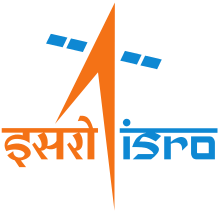Hypersonic Flight Experiment
Hypersonic Flight Experiment or HEX was the first test flight in the RLV Technology Demonstration Programme of the Indian Space Research Organisation (ISRO). The demonstration trials will pave the way for a two-stage-to-orbit (TSTO) fully re-usable launch vehicle. HEX was launched on 23 May 2016.[2][3][4]
| Mission type | Test flight |
|---|---|
| Operator | ISRO |
| Mission duration | 12 minutes |
| Start of mission | |
| Launch date | 23 May 2016[1] |
| Rocket | HS9 |
| Launch site | Satish Dhawan FLP |
| End of mission | |
| Landing date | 23 May 2016 |
| Landing site | Splashdown target on the Bay of Bengal |
Configuration
- First stage: live, 9 ton solid booster (S-9)
- Second stage: winged test vehicle, no main engines (scramjet will be used in the future)
In 2009, an airframe engineering model, axisymmetric proto nose cap after graphitisation (C-C) and slow burn rate propellant were completed. Aerodynamic characterization of technology demonstration vehicle was completed at NAL, VSSC and IIST. Computational flow simulation and supersonic combustion in ground testing were also completed.
RLV-TD consists of a fuselage (body), a nose cap, double delta wings and twin vertical rudders. It has active control surfaces called Elevons and Rudders.[4] Apart from the twin rudders it is similar in shape and operation to a small Space Shuttle Orbiter.
Objectives
HEX was the first test flight of a reusable launch vehicle developed by India. The test flight objectives included:[11]
- Validating the aerodynamic design characteristics during hypersonic flight
- Characterize induced loads during the hypersonic descent through the atmosphere
- Assess the performance of the carbon fibre used in construction of the nose of the vehicle
- Demonstrate first stage separation sequencing
Launch and flight
The Hypersonic Flight Experiment, or HEX, was the first test-flight in the RLV Technology Demonstration Programme. The RLV-TD vehicle was launched from the first launchpad of Satish Dhawan Space Centre on 23 May 2016 at 7:00 AM local time, on board an HS9 rocket booster.[12]
After a successful lift that lasted 91.1 seconds to a height of about 56 km, the RLV-TD separated from the 9-ton HS9 booster and further ascended to a height of about 65 km. The RLV-TD then began its descent at about Mach 5 (five times the speed of sound). The vehicle's navigation, guidance and control systems accurately steered the vehicle during this phase for a controlled splashdown down to the defined landing spot over the Bay of Bengal, at a distance of about 450 km from Sriharikota, thereby fulfilling its mission objectives.
The vehicle was tracked during its flight from ground stations at Sriharikota and a shipborne terminal. The total flight duration from launch to splashdown lasted about 770 seconds. The unit was not planned to be recovered.[13][14] ISRO plans to construct an airstrip greater than 4 km long in Sriharikota island in the "near future".[15] Critical technologies such as autonomous navigation, guidance & control, reusable thermal protection system, and descent mission management were validated in this flight.
See also
References
- "RLV-TD HEX-01 mission accomplished successfully". Indian Space Research Organisation. isro.gov.in. May 23, 2016. Retrieved May 23, 2016.
- ""India's First-Ever Indigenous Space Shuttle RLV-TD Launched Successfully"".
- India’s Reusable Launch Vehicle-Technology Demonstrator (RLV-TD), Successfully Flight Tested. 23 May 2016. ISRO.
- RLV-TD. ISRO. 23 May 2016. Includes diagrams.
- Kumar, Kiran. ""Indigenous Development of Materials for Space Programme"". Retrieved 30 June 2020.
- "SILICA TILES AS A THERMAL PROTECTION FOR RLV-TD" (PDF). Retrieved 30 June 2020.
- "Current Science Volume 114 - Issue 01". Retrieved 30 June 2020.
- "The technology behind India's Reusable Launch Vehicle". Retrieved 30 June 2020.
- "A Deep Dive Into ISRO's Reusable Launch Vehicle Technology – Part I". Retrieved 30 June 2020.
- "A Deep Dive Into ISRO's Reusable Launch Vehicle Technology – Part II". Retrieved 30 June 2020.
- An Indian space shuttle takes shape 2009
- Bagla, Pallava (2 May 2016). "Swadeshi Space Shuttle Tests, ISRO's 'Mission Accomplished': 10 Facts". DDTV. India. Retrieved 2016-05-25.
- "India's Reusable Launch Vehicle Successfully Flight Tested". ISRO website. Retrieved 23 May 2016.
- "ISRO successfully launches Indias first ever indigenous space shuttle". The Economic Times. Retrieved 24 May 2016.
- "ISRO Gears up for 6 Major Missions This Year". Express News Service. 30 May 2015.
